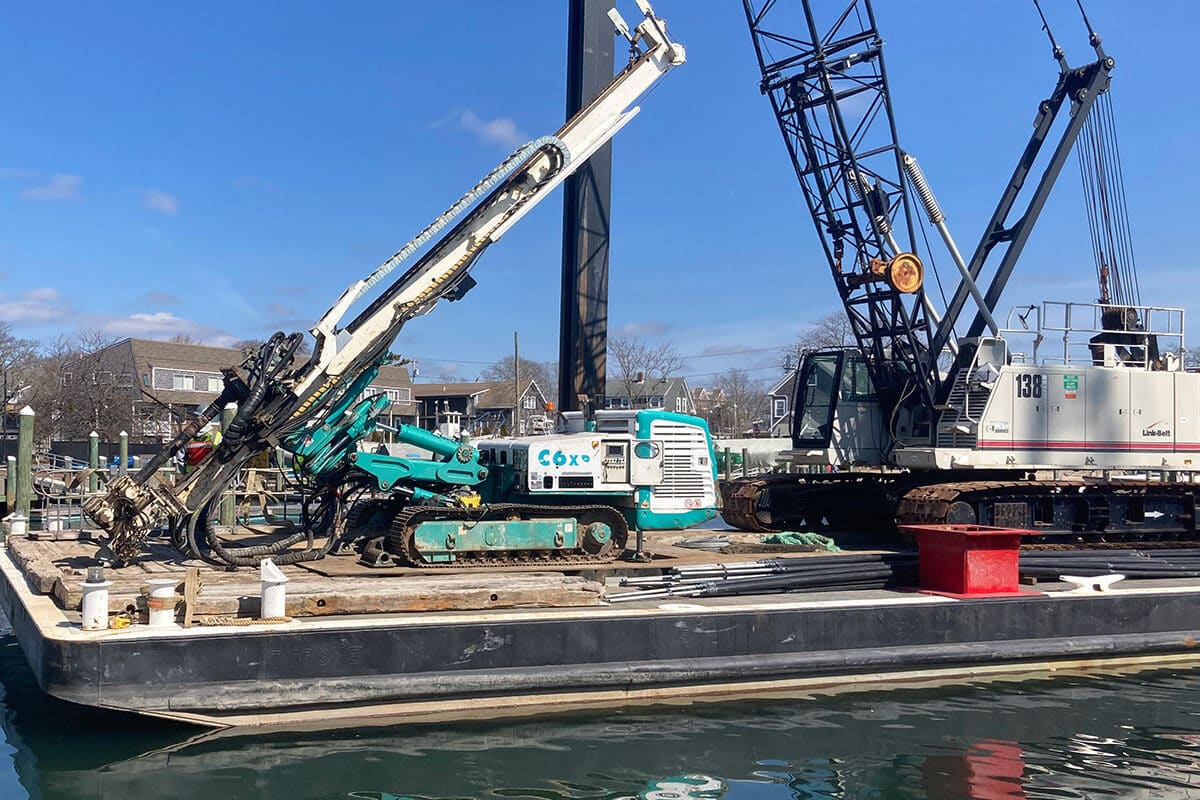Locate the most effective Williams Anchors for Safeguarding Structures and Maintaining Wall Surfaces
Locate the most effective Williams Anchors for Safeguarding Structures and Maintaining Wall Surfaces
Blog Article
Reliable Rock Anchors for Secure and Steady Foundations
In the world of civil design, the role of dependable rock anchors can not be overemphasized, as they are essential in developing secure and secure foundations throughout a selection of applications. Recognizing the different kinds of rock supports, their certain applications, and the ins and outs of installation and upkeep is essential for optimizing their performance.
Types of Rock Anchors

Easy supports rely on the weight of the structure and the bordering dirt or rock to give resistance. They are typically used in applications where marginal activity is anticipated. Active supports, on the other hand, include the application of tension with a high-strength cord or rod, producing a pre-stressed problem in the support. This kind is specifically helpful in dynamic environments, such as landslide-prone areas.
Grouted supports are one more considerable classification, wherein a steel bar or wire is inserted into a pierced hole, followed by a cementitious cement. When cured, the cement bonds with the surrounding rock, developing a robust anchoring system. Each kind of rock support provides distinct advantages based upon the particular geological problems and architectural needs, thereby playing a crucial role in the general honesty and longevity of created centers.
Applications in Building
Rock anchors play an essential role in different construction applications, providing important assistance and stability in varied environments. These innovative solutions are utilized in tasks ranging from large-scale facilities advancements to smaller sized household frameworks. Among the primary applications of rock anchors remains in the stabilization of slopes and keeping walls, where they aid prevent soil erosion and keep structural honesty.
In addition, rock anchors contribute in securing foundations for bridges, tunnels, and skyscraper structures, guaranteeing they can withstand lateral pressures such as wind and seismic activity. Their flexibility permits installation in difficult geological conditions, making them optimal for projects in hilly or rough surfaces.

Secret Option Criteria
Picking the suitable rock anchor for a certain application requires cautious factor to consider of numerous crucial standards. The geological problems of the website must be thoroughly evaluated. Recognizing rock type, strength, and stability is necessary to ensure that click site the support will perform efficiently under lots problems.

One more vital variable is the rust resistance of the support materials. In environments exposed to wetness or chemicals, making use of corrosion-resistant products will certainly extend the life expectancy of the anchors and keep architectural stability with time.
In addition, the support's installment method need to align with the task's demands and constraints. Alleviate of installment, as well as the possible effect on bordering structures, must be taken into consideration.
Installment Techniques
Efficient setup techniques are vital for the successful performance of rock anchors. Correct installment ensures that the anchors attain the wanted load-bearing capacity and security within the geological problems. The very first step in the installation procedure involves site analysis, where geological surveys identify the rock kind, condition, and any kind of potential obstacles.
When the site is assessed, the proper drilling method must be chosen-- alternatives include rotating boring, diamond exploration, or percussion boring. The choice depends on rock hardness and environmental considerations. Precise drilling depth and angle are vital to ensure that the visit here anchors line up with structural requirements and tons circulation.
After drilling, the next phase involves cleaning the borehole to eliminate debris, which can compromise bond toughness. Following this, the support is placed, and if needed, a cement or material is injected to boost adhesion. The treating time of these materials must be stuck to, guaranteeing that the anchors achieve complete stamina before any tons is applied.
Maintenance and Inspection
Appropriate upkeep and assessment of rock supports are necessary to guarantee their long-term efficiency and reliability (Williams Anchors). Routine assessments aid recognize any type of prospective problems, such as rust, variation, or structural tiredness that could endanger the integrity of the anchoring system
Regular evaluations need to be carried out at defined intervals, thinking about ecological elements and the particular application of the rock supports. Visual assessments need to concentrate on the exposed areas of the anchors, looking for signs of corrosion, splits, or various other abnormalities. Additionally, it is important to evaluate the surrounding geological conditions to find any type of shifts in soil or rock that may affect anchor performance.
Sometimes, advanced techniques such as lots screening or non-destructive testing might be required to ascertain the supports' load-bearing capability and general wellness. Correct documents of examination findings, upkeep tasks, and any type of repair work or replacements done is crucial for ongoing assessment and conformity with industry criteria.
Final Thought
Finally, trustworthy rock supports play a critical function in making sure secure and stable structures throughout numerous building and construction applications. By efficiently transferring lots and enhancing stability against side pressures, these supports add significantly to the durability and honesty of frameworks such as bridges, passages, and preserving walls. Strategic option, installment, and maintenance of rock anchors are essential for optimizing performance and guarding public security, inevitably emphasizing their value in modern-day design techniques.
Report this page